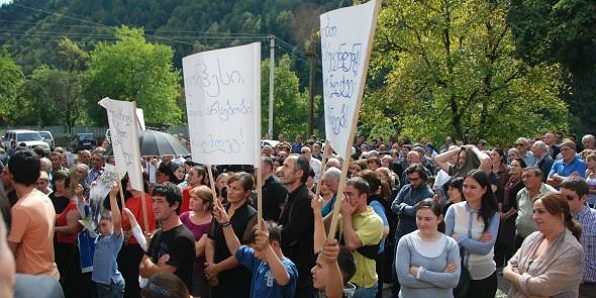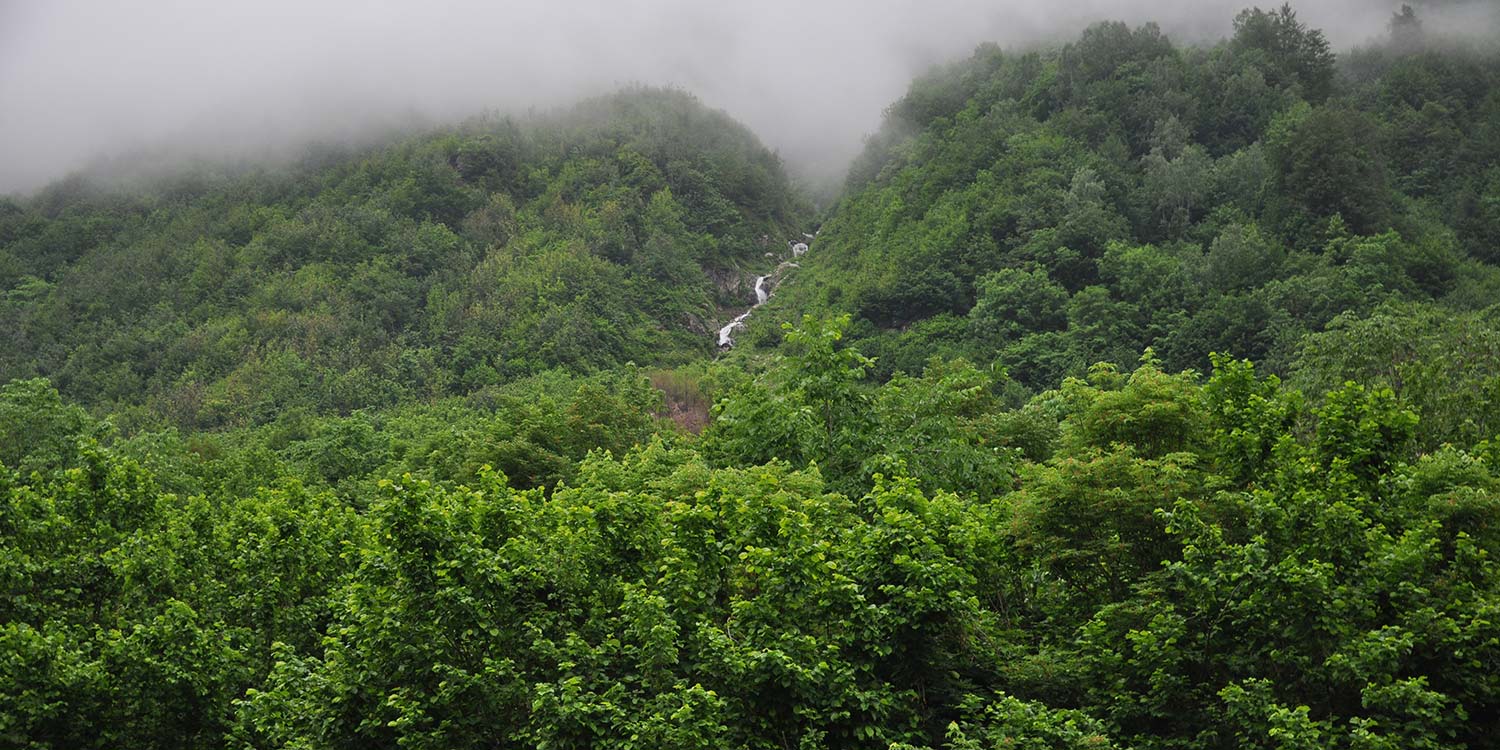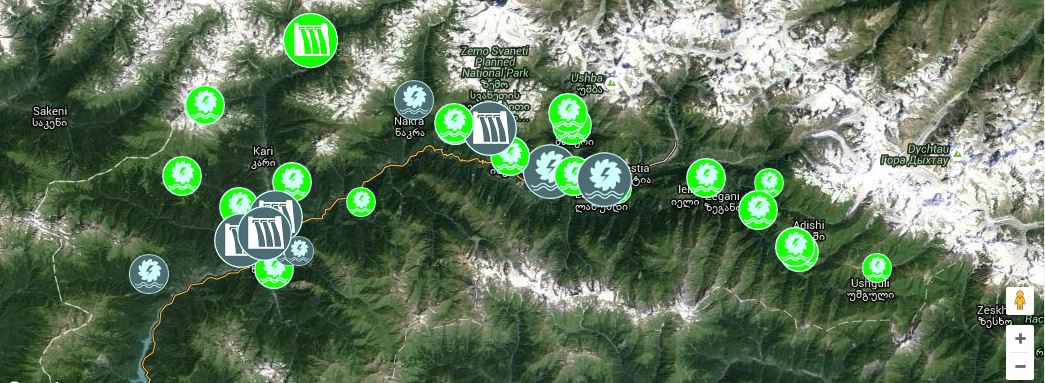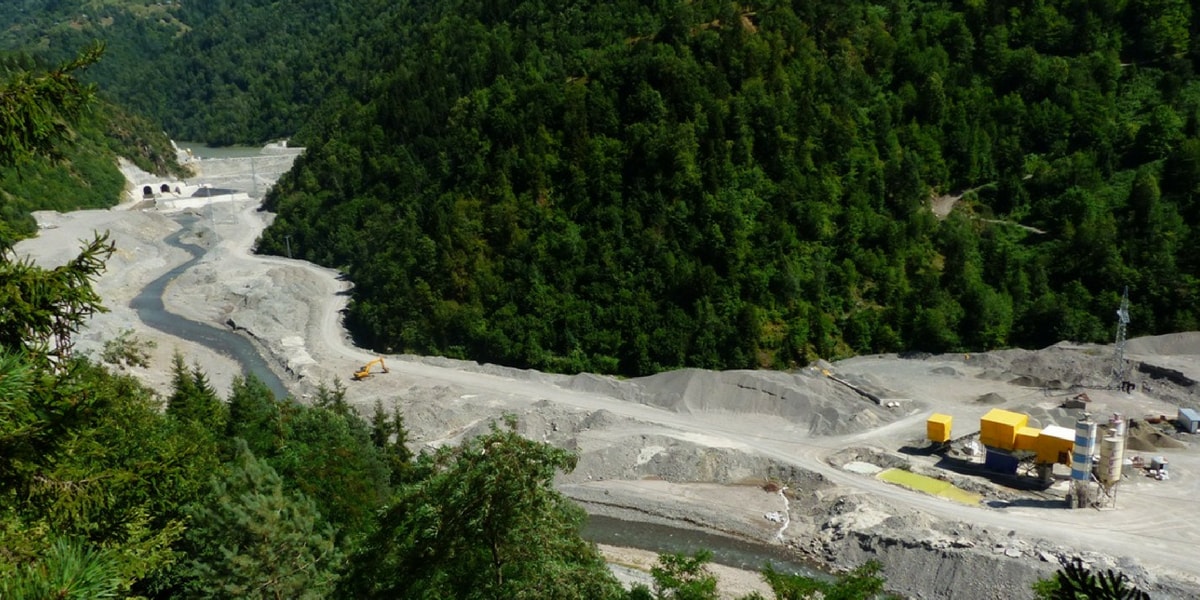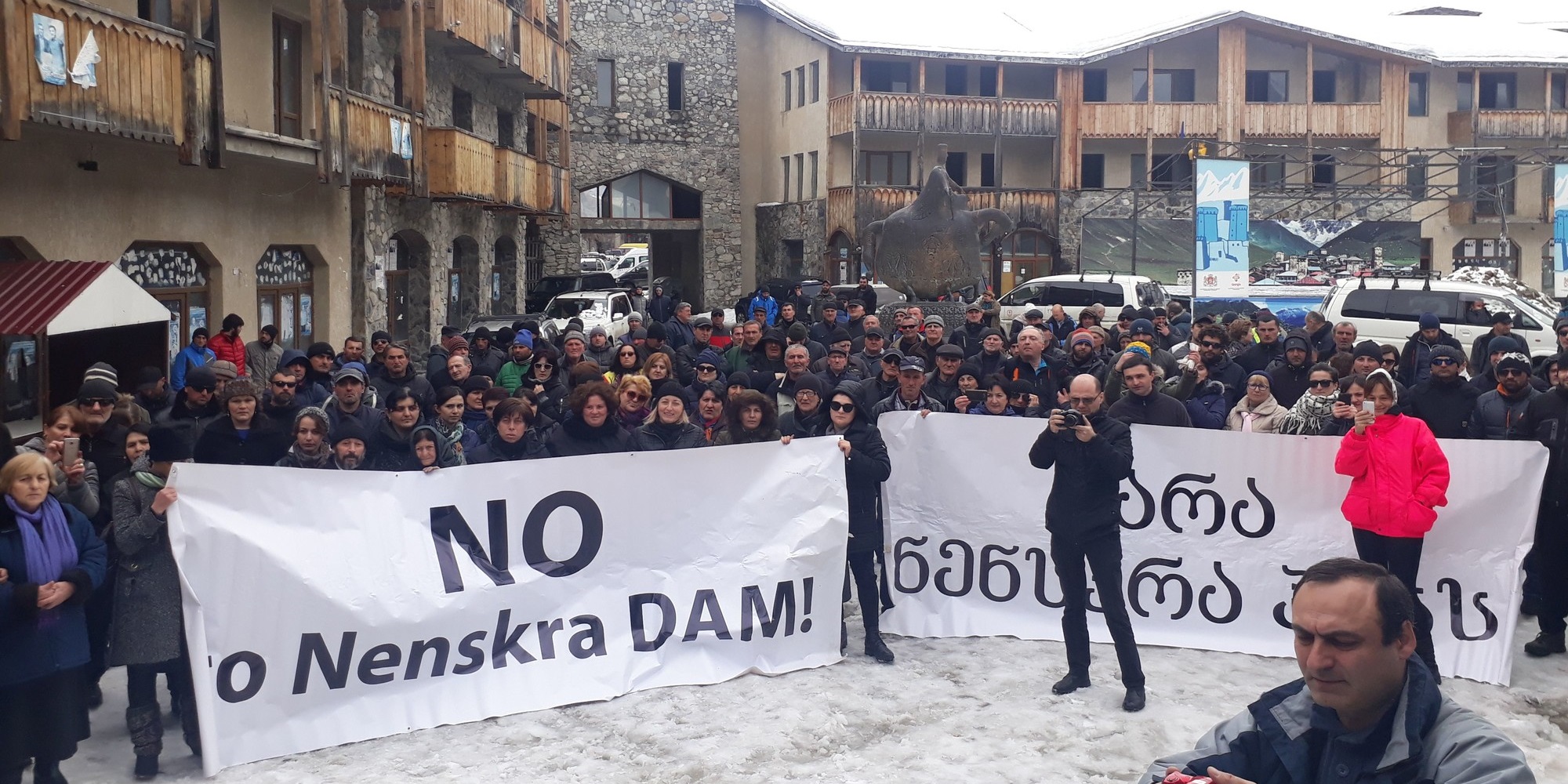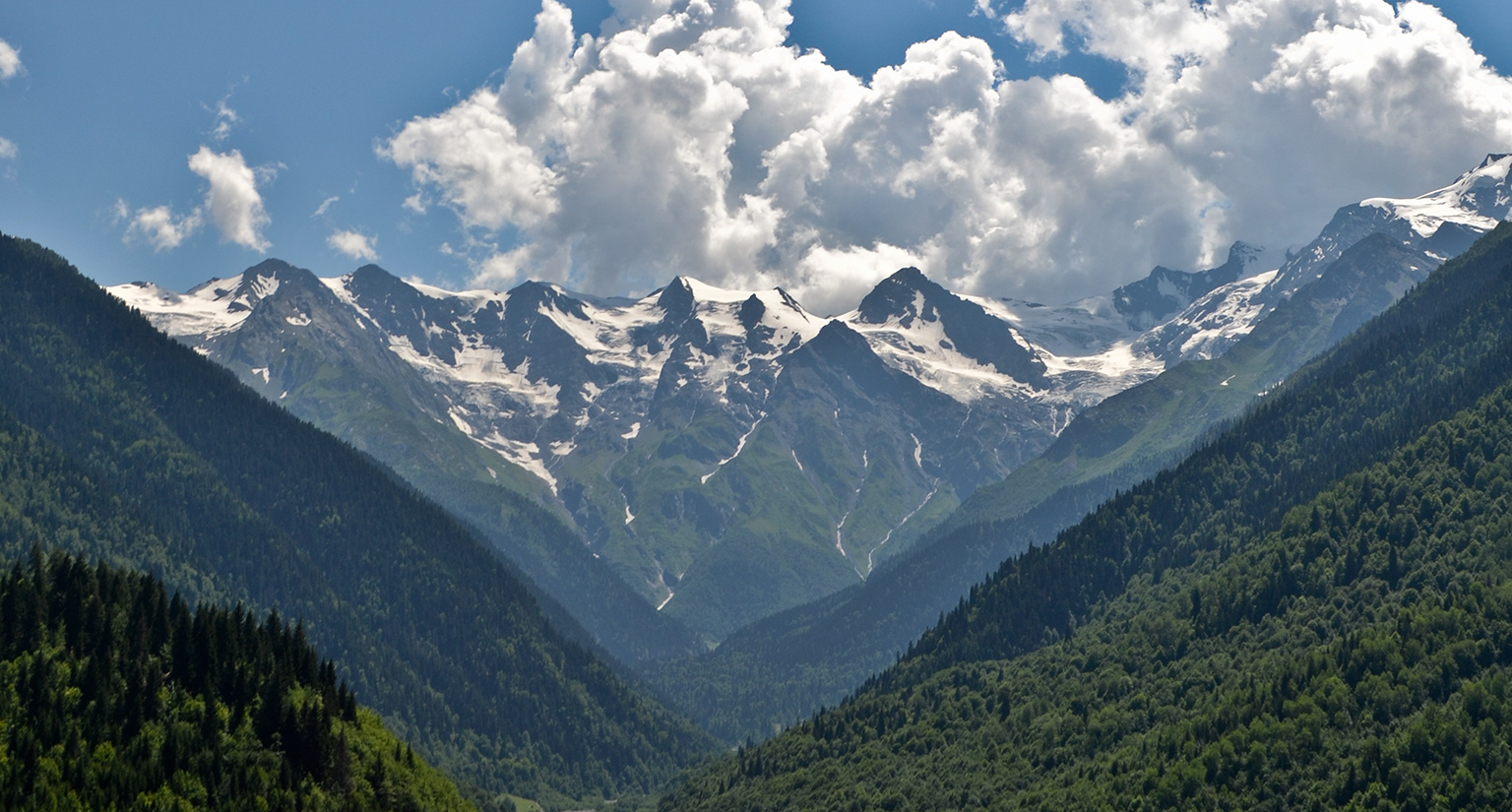Hydropower development in Georgia
Georgia plans to build a huge number of dams. Yet with 85 percent of electricity needs satisfied and exports not being taxed, these plans will rather benefit private investors than offering sustainable development for Georgia.
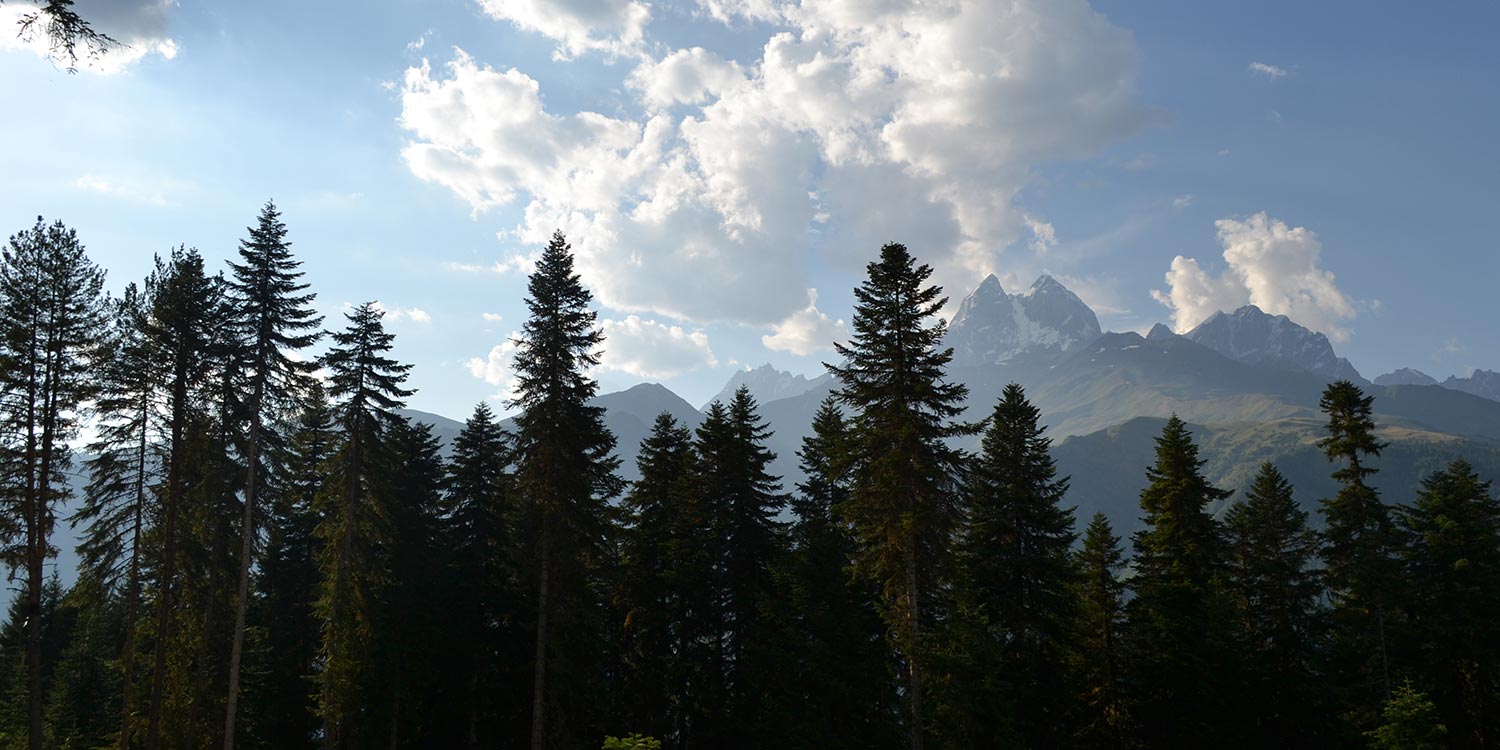
Stay informed
We closely follow international public finance and bring critical updates from the ground.
Key issues
- large dams will have adverse impacts on local communities’ livelihoods – more >>
- a cascade of projects will reshape the pristine mountain area of Upper Svaneti – more >>
- land- and mud slides have already resulted in casualties, yet geological risks are not properly assessed – more >>
- legal framework in Georgia offers limited protection for people affected by expropriation and resettlement – more >>
Background
Blessed with staggering mountains, Georgia has a largely unexploited hydropower potential on which private investors, the Georgian government and international lenders have set their sight.
Experience and ongoing monitoring shows that while some hydropower projects would only bring marginal, if any, benefits for locals, the risks associated with them are largely being underestimated or ignored.
Large dams versus local communities
Khudoni
By far the most controversial hydropower project in Georgia is the Khudoni dam. It will interfere with a rich cultural heritage and 2000 people will have to be forcefully resettled.
At the same time the opaque ownership of the project company (registered in a tax haven) and its contractual obligations make the purported benefits of the 702 MW project doubtful.
Nenskra
Not far from the site for Khudoni, another controversial large dam project, the 280 MW Nenskra hydropower plant, is being planned. It is the most advanced of Georgia’s massive plans for hydropower installations in the Upper Svaneti region.
It will deprive the local community of ethnic Svans of lands and livelihoods, but potential negative impacts have not been properly assessed.
A historical view on the Georgian energy sector, the effects on local communities and the role of international financial institutions.
Geological hazards in mountain areas
Also smaller projects like the Dariali (pdf) and the Shuakhevi (pdf) HPPs can pose substantial risks, even when no dams have to be built.
Apart from damaging the rivers’ biodiversity, the projects are being constructed without proper assessment of the geological conditions. Two fatal landslides in the Dariali Gorge revealed the irresponsible decision-making by the investors and the Georgian government.
Read more
Second fatal landslide in Georgian Dariali valley
Blog post | August 22, 2014
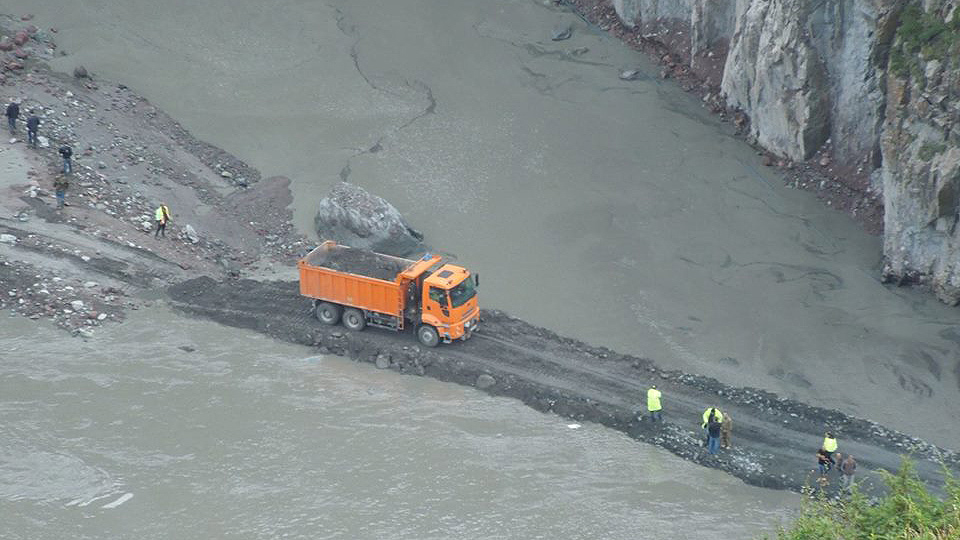
Landslides happened at the site of the Dariali hydropower construction. (Original image by Iago Kazalikashvili.)
Al Jazeera visited Georgia’s hydropower projects to report on constructions in seismically active areas.
Resettlement and lack of legal protection
Georgian communities that face hydropower projects have difficulties protecting their rights as affected stakeholders and landowners.
- Georgia’s legislation does not address the issue of involuntary resettlement caused by infrastructure projects.
- The Environmental Impact Assessment (EIA) system is ineffective in Georgia, both in terms of providing the public with information and opportunities for public participation (pdf).
- An unclear legal rights regime offers no or minimal protection for communities that make customary use of land that traditionally was in their hands. Unregistered land plots can literally be grabbed by investors for infrastructure projects.
In addition to the threat of losing their land or being resettled, farmers may have to face reduced access to water for irrigation or higher risk of flooding due to dam constructions. Both exposes them to an increased food insecurity.
Related projects
Shuakhevi hydropower plant, Georgia
Georgia’s biggest and one of the most controversial hydropower plants is mostly famous for its failures. Two months after becoming operational in 2017 its tunnels collapsed. And after two years of repairs water is leaking from the dam. Shuakhevi hydropower plant (HPP) once promised to bring energy independence to Georgia. Instead it managed to collect an impressive ‘portfolio’ of problems in a wide range of areas: from biodiversity, to gender impacts, to community relations.
Nenskra hydropower plant, Georgia
The Nenskra dam is the largest of Georgia’s massive plans for hydropower installations in the Upper Svaneti region. If realized, it will deprive the local indigenous communities of their ancestral lands and traditional livelihoods, and cause an irreversible damage to the fragile river and mountain ecosystems.
Khudoni hydropower plant, Georgia
While a mountain community will have to be forced to resettle for this mega-project, the opaque ownership and weak taxation mean that benefits for Georgia are highly doubtful.
Latest news
[Campaign update] More EBRD cash for Georgia dams should be cautionary tale for other development banks
Blog entry | 5 February, 2018The European Investment Bank is set to decide on the billion dollar Nenskra dam project during its board meeting today.
Read moreTalking too much in the marshrutka: how I came to treasure Saventi
Blog entry | 16 January, 2018Rosa Vroom, author of the multimedia hub ‘Sventi is my homeland’, reflects on what makes the region and its people so special
Read morePrice tag of Georgia’s Nenskra dam goes through the roof
Blog entry | 4 December, 2017New information reveals the disproportionate price that Georgia’s government guarantees to pay for electricity from the Nenskra dam. The increasingly unfavourable economics strengthen calls to finally make the project’s contract publicly available.
Read moreRelated publications
The Upper Horizons complex, Bosnia and Herzegovina
Briefing | 18 December, 2023 | Download PDFThe Upper Horizons hydropower complex has been planned since the mid-20th century, and is planned to consist of three plants — Dabar, Nevesinje and Bileća — linked by a series of tunnels and channels. If completed, it would have a devastating impact on the karst ecosystems of eastern Herzegovina and beyond.
The Ulog hydropower plant on the river Neretva, Bosnia and Herzegovina
Briefing | 18 December, 2023 | Download PDFThe Ulog plant, with a 53-metre high dam, is currently being built on the upper Neretva in the Republika Srpska entity of Bosnia and Herzegovina, in the middle of a nominated candidate Emerald site – an area which should be protected under the Bern Convention.
Joint Statement On the Expansion of the Emerald Network in Countries of the Western Balkans by scientists and representatives of NGOs
Statement | 13 February, 2023 | Download PDFIn early December 2022, 39 scientists and representatives of NGOs from Albania, Austria, Bosnia and Herzegovina, Bulgaria, Croatia, Germany, Greece, Montenegro, North Macedonia, Serbia and Switzerland joined efforts to prepare a shadow list and a map o
